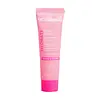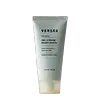What's inside
What's inside
 Key Ingredients
Key Ingredients

 Benefits
Benefits

 Concerns
Concerns

 Ingredients Side-by-side
Ingredients Side-by-side

Water
Skin ConditioningGlycerin
HumectantCetearyl Alcohol
EmollientDipropylene Glycol
HumectantHydrogenated Polyisobutene
EmollientCaprylic/Capric Triglyceride
MaskingHydrogenated Polydecene
EmollientNiacinamide
SmoothingGlyceryl Stearate Se
EmulsifyingButyrospermum Parkii Butter
Skin ConditioningPhenyl Trimethicone
Skin ConditioningSodium Hyaluronate
HumectantCeramide NP
Skin ConditioningCeramide Ng
Skin ConditioningPhytosphingosine
Skin ConditioningCholesterol
EmollientHydrolyzed Hyaluronic Acid
HumectantCeramide As
Skin ConditioningCeramide AP
Skin ConditioningSodium Acetylated Hyaluronate
HumectantCeramide EOP
Skin ConditioningOlea Europaea Fruit Extract
BleachingCentella Asiatica Extract
CleansingBeta-Glucan
Skin ConditioningAloe Barbadensis Leaf Extract
EmollientSqualane
EmollientPanthenol
Skin ConditioningHydrogenated Rapeseed Oil
EmollientAdenosine
Skin ConditioningGlycol Stearate Se
EmulsifyingBehenyl Alcohol
EmollientSynthetic Beeswax
Emulsion StabilisingSilica
AbrasiveCetearyl Olivate
Stearic Acid
CleansingSorbitan Olivate
EmulsifyingAmmonium Acryloyldimethyltaurate/Vp Copolymer
Hydrogenated Lecithin
EmulsifyingMicrocrystalline Cellulose
AbsorbentDimethicone
EmollientCellulose Gum
Emulsion Stabilising1,2-Hexanediol
Skin ConditioningHydroxyacetophenone
AntioxidantTocopheryl Acetate
AntioxidantSalvia Officinalis Oil
MaskingPelargonium Graveolens Flower Oil
MaskingGeraniol
PerfumingLimonene
PerfumingLinalool
PerfumingCitrus Aurantium Bergamia Fruit Oil
MaskingPogostemon Cablin Leaf Oil
MaskingCitral
PerfumingCitronellol
PerfumingWater, Glycerin, Cetearyl Alcohol, Dipropylene Glycol, Hydrogenated Polyisobutene, Caprylic/Capric Triglyceride, Hydrogenated Polydecene, Niacinamide, Glyceryl Stearate Se, Butyrospermum Parkii Butter, Phenyl Trimethicone, Sodium Hyaluronate, Ceramide NP, Ceramide Ng, Phytosphingosine, Cholesterol, Hydrolyzed Hyaluronic Acid, Ceramide As, Ceramide AP, Sodium Acetylated Hyaluronate, Ceramide EOP, Olea Europaea Fruit Extract, Centella Asiatica Extract, Beta-Glucan, Aloe Barbadensis Leaf Extract, Squalane, Panthenol, Hydrogenated Rapeseed Oil, Adenosine, Glycol Stearate Se, Behenyl Alcohol, Synthetic Beeswax, Silica, Cetearyl Olivate, Stearic Acid, Sorbitan Olivate, Ammonium Acryloyldimethyltaurate/Vp Copolymer, Hydrogenated Lecithin, Microcrystalline Cellulose, Dimethicone, Cellulose Gum, 1,2-Hexanediol, Hydroxyacetophenone, Tocopheryl Acetate, Salvia Officinalis Oil, Pelargonium Graveolens Flower Oil, Geraniol, Limonene, Linalool, Citrus Aurantium Bergamia Fruit Oil, Pogostemon Cablin Leaf Oil, Citral, Citronellol
Water
Skin ConditioningGlycerin
HumectantPropylene Glycol
HumectantSqualane
Emollient1,2-Hexanediol
Skin ConditioningCamellia Sinensis Leaf Extract
AntimicrobialAloe Barbadensis Leaf Juice
Skin ConditioningSodium Hyaluronate
HumectantSambucus Nigra Flower Extract
RefreshingSimmondsia Chinensis Seed Oil
EmollientTriticum Vulgare Germ Oil
EmollientVegetable Oil
Skin ConditioningPolyacrylamide
Carbomer
Emulsion StabilisingLaureth-7
EmulsifyingC13-14 Isoparaffin
EmollientTrisodium Ethylenediamine Disuccinate
Phenoxyethanol
PreservativePotassium Sorbate
PreservativeSodium Benzoate
MaskingCitric Acid
BufferingSodium Hydroxide
BufferingWater, Glycerin, Propylene Glycol, Squalane, 1,2-Hexanediol, Camellia Sinensis Leaf Extract, Aloe Barbadensis Leaf Juice, Sodium Hyaluronate, Sambucus Nigra Flower Extract, Simmondsia Chinensis Seed Oil, Triticum Vulgare Germ Oil, Vegetable Oil, Polyacrylamide, Carbomer, Laureth-7, C13-14 Isoparaffin, Trisodium Ethylenediamine Disuccinate, Phenoxyethanol, Potassium Sorbate, Sodium Benzoate, Citric Acid, Sodium Hydroxide
 Reviews
Reviews

Ingredients Explained
These ingredients are found in both products.
Ingredients higher up in an ingredient list are typically present in a larger amount.
1,2-Hexanediol is a synthetic liquid and another multi-functional powerhouse.
It is a:
- Humectant, drawing moisture into the skin
- Emollient, helping to soften skin
- Solvent, dispersing and stabilizing formulas
- Preservative booster, enhancing the antimicrobial activity of other preservatives
Glycerin is already naturally found in your skin. It helps moisturize and protect your skin.
A study from 2016 found glycerin to be more effective as a humectant than AHAs and hyaluronic acid.
As a humectant, it helps the skin stay hydrated by pulling moisture to your skin. The low molecular weight of glycerin allows it to pull moisture into the deeper layers of your skin.
Hydrated skin improves your skin barrier; Your skin barrier helps protect against irritants and bacteria.
Glycerin has also been found to have antimicrobial and antiviral properties. Due to these properties, glycerin is often used in wound and burn treatments.
In cosmetics, glycerin is usually derived from plants such as soybean or palm. However, it can also be sourced from animals, such as tallow or animal fat.
This ingredient is organic, colorless, odorless, and non-toxic.
Glycerin is the name for this ingredient in American English. British English uses Glycerol/Glycerine.
Learn more about GlycerinSodium Hyaluronate is hyaluronic acid's salt form. It is commonly derived from the sodium salt of hyaluronic acid.
Like hyaluronic acid, it is great at holding water and acts as a humectant. This makes it a great skin hydrating ingredient.
Sodium Hyaluronate is naturally occurring in our bodies and is mostly found in eye fluid and joints.
These are some other common types of Hyaluronic Acid:
Learn more about Sodium HyaluronateSqualane is an emollient that helps the skin hold onto moisture. It's an oily liquid that occurs naturally in certain types of fish and plant oils.
Because squalane boosts hydration in the skin, it also comes with plenty of benefits: it is an antioxidant and can help fight free radicals and skin damage. Squalane is also found to have a detoxifying effect when applied.
Squalane comes from squalene, which occurs naturally within the sebum of our skin. It is one of the oils our skin produces to keep itself hydrated. Squalane is the hydrogenated version of squalene and has a longer shelf life.
Research shows that squalane is non-irritating (even at 100% concentration).
In general, it's a fantastic ingredient. It does a great job at hydrating the skin, and it's suitable for those with sensitive skin.
The source of squalane may impact malassezia / fungal acne. This is because olive oil derived squalane can contain impurities such as fatty acids and plant waxes. Sugarcane derived squalane is recommended for anyone with malassezia concerns.
Is squalane vegan?
This depends on the source. Squalane can be derived from both plants and animals. Most squalane used in skincare comes from plants.
Please note: the source of squalane is only known if disclosed by the brand. We recommend reaching out to the brand if you have any questions about their squalane.
Read more about squalene with an "e".
Is squalane an oil?
Squalane is often called an oil, but it’s technically not; it’s a hydrocarbon, meaning it’s only made of carbon and hydrogen, unlike true oils which are triglycerides made of fatty acids and glycerol.
The term “oil-free” isn’t regulated, so companies can define it however they want. Some exclude all oils, while others just avoid mineral oil or comedogenic oils.
While some people avoid oils thinking they cause breakouts, the right kind of oil (or oil-like ingredient like squalane) can actually help balance and hydrate your skin. It’s worth testing out simple oils or squalane to see what works best for your skin.
Learn more about SqualaneWater. It's the most common cosmetic ingredient of all. You'll usually see it at the top of ingredient lists, meaning that it makes up the largest part of the product.
So why is it so popular? Water most often acts as a solvent - this means that it helps dissolve other ingredients into the formulation.
You'll also recognize water as that liquid we all need to stay alive. If you see this, drink a glass of water. Stay hydrated!
Learn more about Water